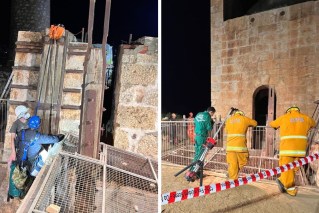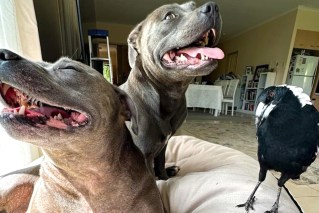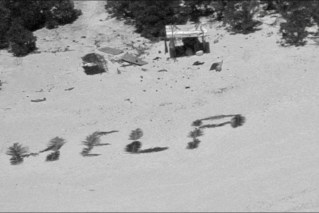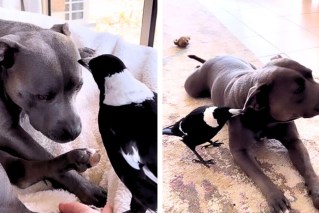The shipwreck hunter searching for the ‘holy grail’ in Antarctica
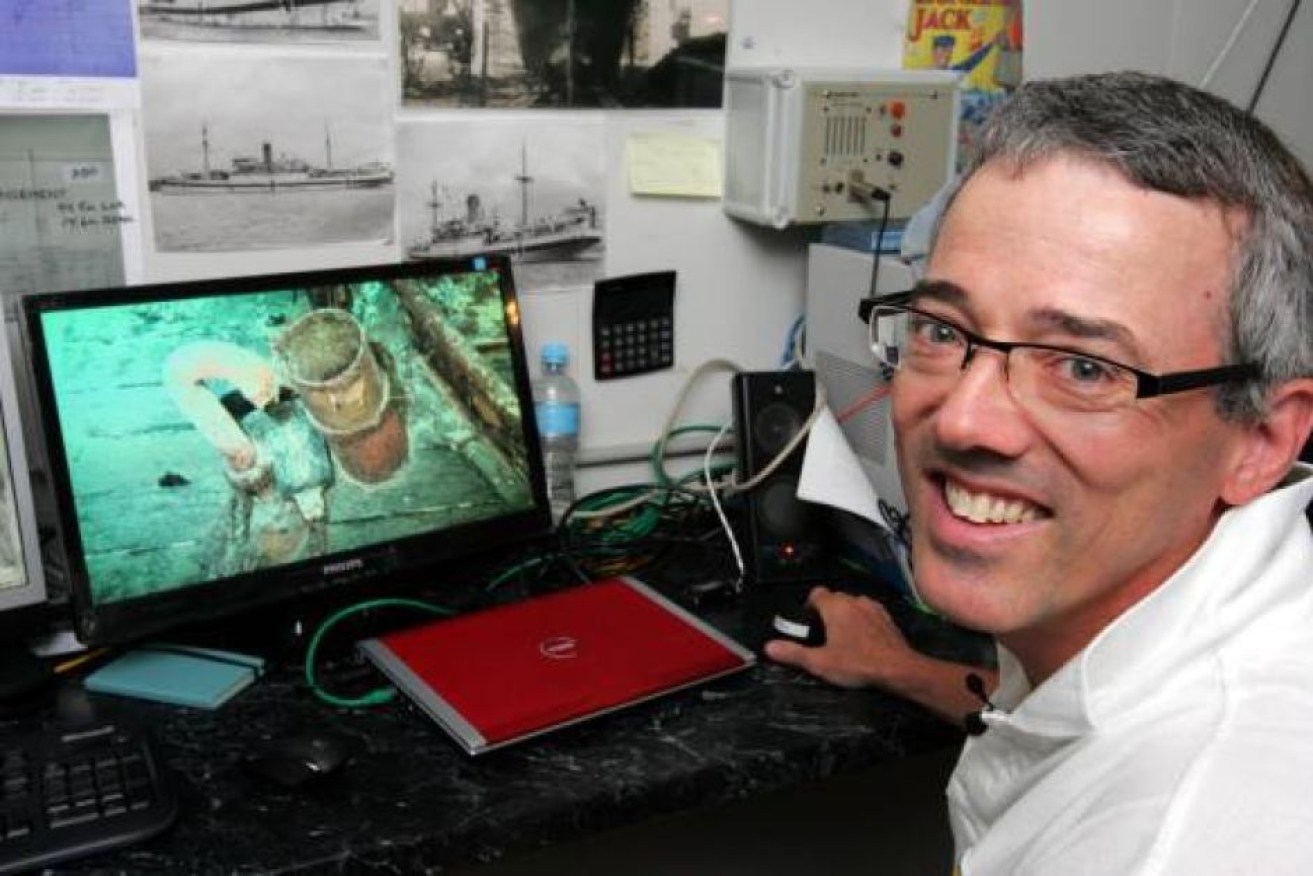
David Mearns looks at footage of the wreckage of AHS Centaur. Photo: Allen & Unwin/ABC
There’s an estimated 3 million shipwrecks discarded on the ocean floor, and self-described “shipwreck hunter” David Mearns is on a mission to uncover their secrets.
The US-born marine scientist and researcher has already found some of the most elusive and controversial wrecks over the last 25 years, and has led deep-water expeditions across the globe.
He helped unravel mysteries surrounding HMAS Sydney (sunk in 1941) and the battlecruiser HMS Hood (also sunk in 1941), as well as historical wrecks like explorer Vasco da Gama’s 16th-century wooden fleet.
“I used to say I took a wrong turn somewhere,” Mr Mearns jokes of how he got into the game.
The truth is he actually started out working with the US Navy doing search and recovery missions for crashed aeroplanes before landing a role investigating a high-profile shipwreck for a murder trial.
From there, he was hooked.
Needles amongst haystacks
The seasoned deep-sea discoverer has now compiled his experiences in a new book, The Shipwreck Hunter, which details the process behind some of the 24 major wrecks he’s uncovered over his career.
Among the highlights was the 2008 discovery of HMAS Sydney, which was sunk during WWII at the cost of 645 lives.
Mr Mearns said once he had the research on where it could possibly be, actually finding the physical wreck was relatively simple.
“When we were actually at sea, [it was] fairly straightforward, and that was the surprising thing,” he said.
“We found Kormoran first, the German raider, in 67 hours, and HMAS Sydney in about 64 hours. Basically we found both shipwrecks in one weekend.
“But these were the ships people thought would never be found, and they called it not a needle in the haystack, but a needle in a thousand haystacks.”

A gun on the port side of the HMAS Sydney. Photo: Australian War Memorial
While technology has made the process far quicker, Mr Mearns said the task of finding lost ships had been going on for decades.
The “art” of it comes from delving into the history books, archives and public library records to uncover clues as to where the ships might be located.
“We were doing this in the mid-80s and the US government was doing it back in the ’60s, so we could always find deep-water shipwrecks, but our ability now is more refined once we have the starting point,” he said.
Searching for the ‘holy grail’
Despite two-dozen high-profile discoveries there remains one ship Mr Mearns calls his holy grail of shipwreck hunting.
“For me it’s Shackleton’s Endurance,” he said.
“This is Sir Ernest Shackleton’s ship Endurance which was lost in the Weddell Sea of Antarctica.”
It’s estimated the famous English ship, which became trapped in pack ice in 1915 and almost cost the crew their life during an ill-fated exploratory trip, is about 3000m below the surface.

Ernest Shackleton’s Endurance trapped in ice in Antarctica in 1915. Photo: Alfred Wegener Institute for Polar and Marine Research
“That’s not a problem because we have the Guinness World Record for the deepest shipwreck ever found, nearly 5800 metres, and 3000m is about average for the shipwrecks I have found,” Mr Mearns said.
“But the problem there is that it’s under the ice pack of the Weddell Sea.
“So we would be faced with the same dangers, going into the same inhospitable environment.”
Even if it was discovered, however, that wouldn’t necessarily mean a recovery mission would be possible, or even preferred.
“Nearly every shipwreck in the book, there was high loss of life, and with some, total loss of life. For example, with HMAS Sydney,” he said.
“So the sensitivity that we practice is our first priority, actually, to make sure that we’re doing this on behalf of the families, next of kin, the relatives, and they have the moral authority about how we actually conduct ourselves.
“So generally it is on a strict ‘look but don’t touch’ basis.”
-ABC


